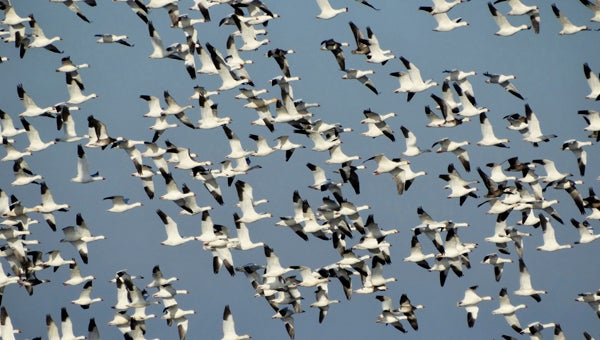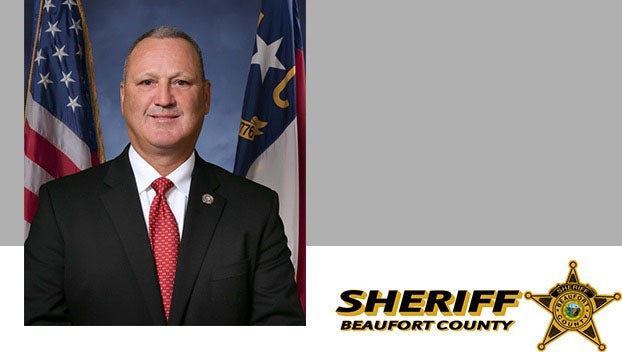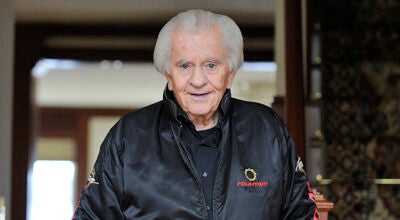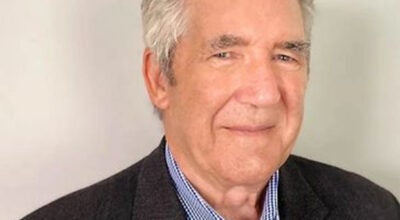REFUGE TONIGHT: Local filmmakers’ newest documentary airs tonight
Published 7:47 pm Wednesday, September 3, 2014

STRS PRODUCTIONS | CONTRIBUTED
ON THE FLY: A flock of greater snow geese fly over Mackay Island in the newest REFUGE documentary by Washington filmmakers Blake and Emily Scott. REFUGE-Mackay Island premiers tonight at 10 p.m. on UNC-TV.
Mackay Island. It’s not really an island, but 8,320 acres of marshland that starts in southernmost part of Virginia, crosses the state line and juts southward into the Currituck Sound. There aren’t many roads into the place; the best way into and out is via the Currituck Island ferry. The majority of the island’s inhabitants come and go with the seasons — hundreds of thousands of birds migrating South to North and back again. But this is no hunter’s paradise: the only shooting to be had is with a camera. That’s exactly what local filmmakers Blake and Emily Scott and their crew did for a year, documenting the wildlife of Mackay Island.
REFUGE-Mackay Island airs tonight at 10 p.m. on UNC-TV. The nature documentary is the sixth in a series of films that capture the life and beauty found within North Carolina’s wildlife refuges. The documentary premiered for the first time in May at a gala event held at the Turnage Theater in Washington, but it airs for the first time on television tonight.
The Scotts and their STRS Productions crew filmed the refuge through a year’s worth of seasons, recording migrations of the greater snow goose, tracking down the elusive King Rail, an increasingly rare waterbird, and capturing the might of Mother Nature in snow and lightning storms.
According to Blake Scott, who’s spent nearly a decade filming nature, Mackay Island is something worth seeing.
“It’s a pretty wild place down there, but I’ll tell you what, it is absolutely beautiful,” Scott said. “It’s unbelievable, it really is. I didn’t even want to come back home.”
Now in the care of the U.S. Fish & Wildlife Service, Mackay Island plays a part in the wildfowl conservation movement, as it has for nearly a century.
In 1918, a wealthy philanthropist named Joseph Knapp bought Mackay Island, building a resort there and experimenting with wildlife management techniques, some of which are still used today, according to the U.S. Fish and Wildlife Service. Two decades later Knapp founded Ducks Unlimited, still one of the most prevalent wildlife conservation organizations in America. In 1960, the U.S. Fish & Wildlife Service took over the island, making it a refuge for migrating waterfowl.
“I think people are really interested in it because of Ducks Unlimited,” Scott said.
While the migrating waterfowl is a huge draw for visitors, Scott said it was the bald eagle that first drew the film crew’s attention.
“When we first arrived on Mackay, the first time of filming, there was a bald eagles’ nest that had been there since 1995. It was about the size of a van. The bald eagles — they dominated that entire island. My first day there, it was like, ‘these guys rule,’” Scott laughed.
The crews filmed a nesting pair of bald eagles, their offspring, then the devastation, when a nor’easter destroyed the nest.
“They stayed there for a long time,” Scott said of the nesting pair. “They were there for a long time, just in a daze. They didn’t know what happened.”
It’s just one story in the nature’s book as told in REFUGE-Mackay Island.
Previous films in the REFUGE series include REFUGE-Roanoke River, REFUGE-Alligator River, REFUGE-Pea Island, REFUGE-Pocosin Lakes and REFUGE-Mattamuskeet. The Scotts are currently their next installment in the REFUGE series in Swan Quarter. For more information, visit www.refugewildlife.com.





